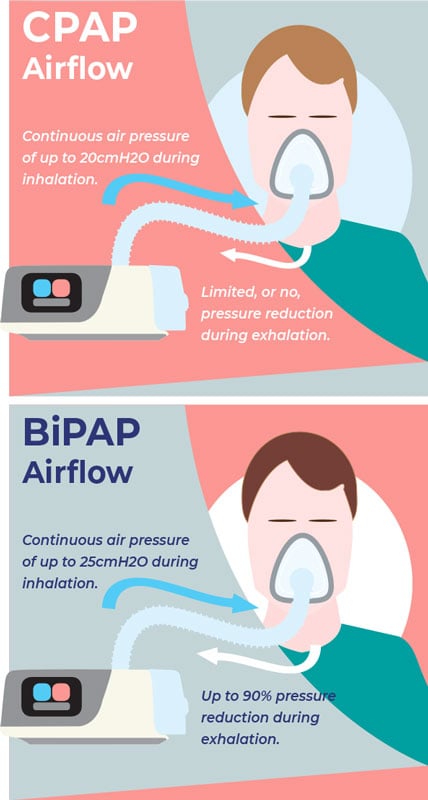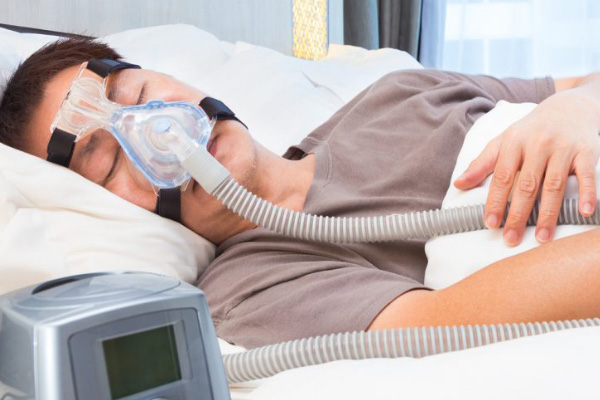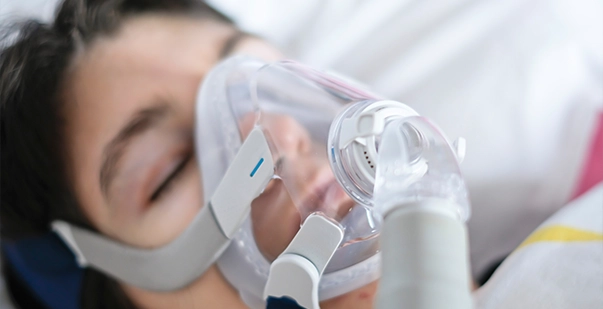Top-Rated BiPAP Rental Companies You Can Trust
Top-Rated BiPAP Rental Companies You Can Trust
Blog Article
Bipap vs. CPAP: Which Is the Finest for Your Sleep Problem?
When browsing the complexities of sleep problems, the selection between BiPAP and CPAP therapy is an important factor to consider. Each modality supplies distinct advantages tailored to details conditions, yet the choice pivots on private patient needs and convenience degrees. While CPAP supplies a constant airflow appropriate for obstructive rest apnea, BiPAP's dual pressure settings might improve comfort for those with more complex respiratory concerns. Comprehending these distinctions can significantly influence treatment effectiveness, leaving one to contemplate which choice truly straightens with their health demands and way of living.
Recognizing Sleep Disorders
Rest conditions encompass a series of conditions that interfere with normal sleep patterns, affecting both the high quality and period of rest. These conditions can materialize in numerous kinds, including sleep problems, sleep apnea, narcolepsy, uneasy leg disorder, and parasomnias. Each condition presents unique difficulties, typically resulting in significant daytime fatigue, cognitive disability, and emotional disruptions.
Sleeping disorders is defined by trouble dropping or staying asleep, while rest apnea involves repeated disruptions in breathing during rest, frequently bring about fragmented rest. Narcolepsy, on the various other hand, is noted by excessive daytime drowsiness and sudden rest attacks. Uneasy leg disorder triggers awkward experiences in the legs, triggering an unmanageable desire to move them, which can additionally impede the capability to go to sleep.
The impact of rest problems prolongs beyond private wellness, influencing overall productivity, connections, and lifestyle. Recognizing the certain nature of each problem is critical for efficient medical diagnosis and therapy. As rest health and wellness comes to be significantly acknowledged as a vital component of overall health, dealing with these conditions is vital for boosting both rest quality and day-to-day functioning.
Just How CPAP Works
Continuous Positive Airway Stress (CPAP) therapy is often utilized as a primary treatment for obstructive rest apnea (OSA) The mechanism of CPAP entails making use of a device that supplies a stable stream of air through a mask worn throughout sleep. This air flow preserves favorable pressure in the air passage, avoiding the collapse or obstruction of the throat that can happen throughout rest.
When a client breathes in, the CPAP machine offers a continuous flow of air, ensuring that the airway continues to be open - BiPAP Rental. This not just minimizes the symptoms of OSA, such as snoring and disrupted sleep patterns, yet also reduces the associated health and wellness threats, consisting of cardio difficulties and daytime exhaustion
The stress setups on a CPAP device can be tailored to satisfy private patient requirements, commonly established with a sleep research study. In general, CPAP treatment has been revealed to dramatically boost the top quality of sleep and total health and wellness for individuals experiencing from obstructive rest apnea.
How BiPAP Functions
BiPAP, or Bilevel Positive Airway Stress, is a specialized kind of non-invasive air flow that is especially valuable for individuals with problems such as complex sleep apnea or breathing disorders. Unlike CPAP, which supplies a continuous stream of air at a solitary pressure, BiPAP supplies 2 distinct stress settings: a higher inspiratory pressure for inhalation and a reduced expiratory stress for exhalation. This dual-pressure method enables for much easier breathing, decreasing the effort required during exhalation.
The device operates via a mask fitted over the nose or mouth, attached to a machine that produces atmospheric pressure. When the patient inhales, the maker provides the higher stress to assist with air movement, ensuring that the respiratory tract remains open. Upon exhalation, the maker automatically decreases the stress, making it more comfortable for the patient to breathe out.

Secret Differences Between BiPAP and CPAP

In contrast, BiPAP (Bilevel Positive Air passage Pressure) supplies 2 various pressure settings: one for breathing and a reduced one for exhalation. This dual stress system permits more comfy breathing, specifically for clients who battle with breathing out against a continuous stress. BiPAP is usually recommended for patients with complex sleep apnea, persistent obstructive lung illness (COPD), or those who need extra support during sleep.
Additionally, the intricacy of BiPAP tools commonly results Learn More Here in a higher cost and calls for extra mindful titration than CPAP. BiPAP Rental. Recognizing these vital distinctions can aid in recognizing which tool might be better for certain sleep conditions, establishing the foundation for educated therapy decisions
Selecting the Right Treatment
The decision in between BiPAP and CPAP treatment mostly pivots on the certain qualities of the rest disorder, the patient's total wellness, and their convenience with the gadget. CPAP, which provides a continual stream of air, is frequently recommended for obstructive rest apnea (OSA)
On the other hand, BiPAP supplies two degrees of stress: one for inhalation and a lower one for exhalation. This twin stress system is valuable for patients with intricate sleep apnea or those who experience trouble breathing out against a continuous pressure. Furthermore, BiPAP is commonly recommended for people with respiratory problems, such as chronic obstructive pulmonary disease (COPD), where differing stress settings can boost comfort and conformity.
Ultimately, a detailed analysis by a rest professional, including a sleep research, can assist establish which treatment aligns ideal with the individual's requirements. Variables such as convenience, simplicity of usage, and details clinical problems should additionally be thought about to enhance therapy outcomes.
Verdict
In recap, both BiPAP and CPAP offer distinctive objectives in the administration of sleep disorders. CPAP is effective for obstructive sleep apnea through regular airflow, while BiPAP supplies twin pressure settings that boost comfort for those with intricate rest apnea or respiratory problems. The selection between these therapies need to be led by private needs and problems, requiring a detailed analysis by a sleep specialist to make certain optimal treatment end results and improved high quality of sleep.

Overall, CPAP therapy has actually been Homepage shown to substantially improve the top additional resources quality of sleep and general wellness for people enduring from obstructive rest apnea.
BiPAP is typically advised for clients with complicated rest apnea, chronic obstructive lung illness (COPD), or those that require additional support throughout rest.
CPAP is efficient for obstructive rest apnea via constant air flow, while BiPAP offers dual pressure setups that improve comfort for those with complicated sleep apnea or respiratory problems.
Report this page